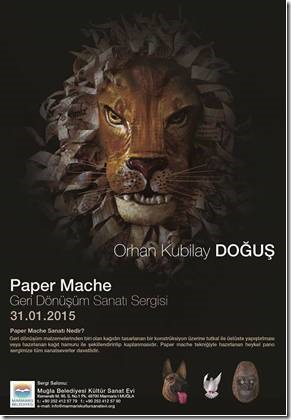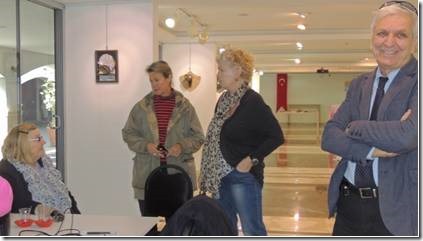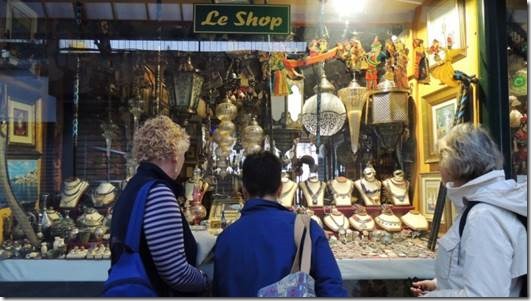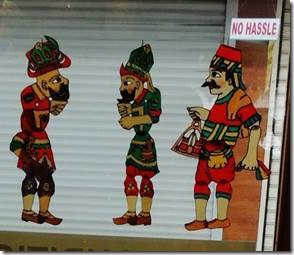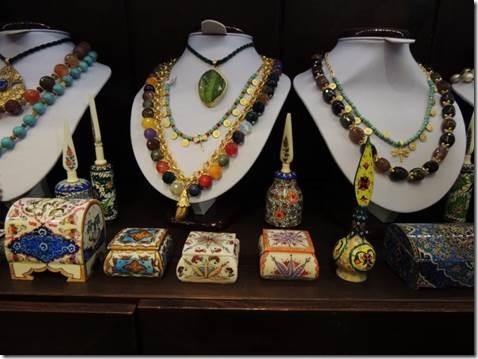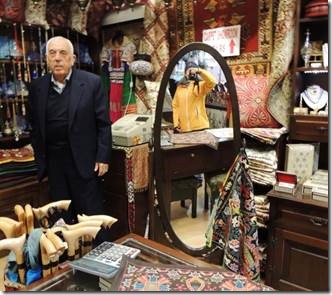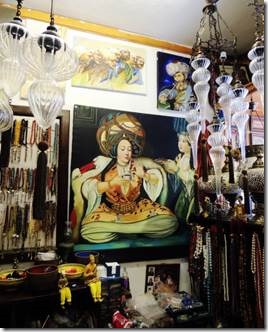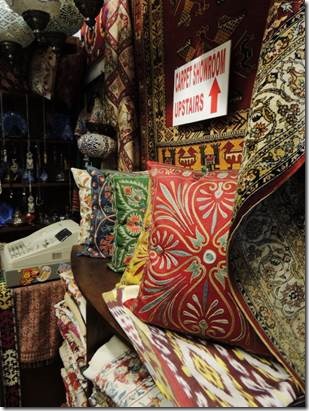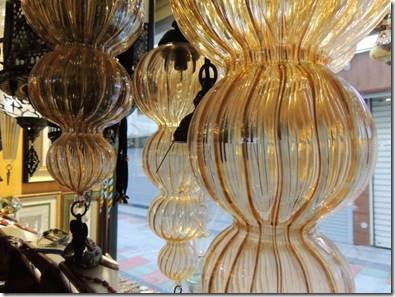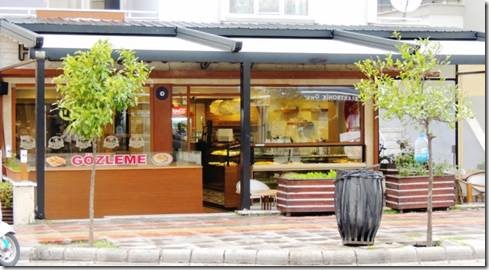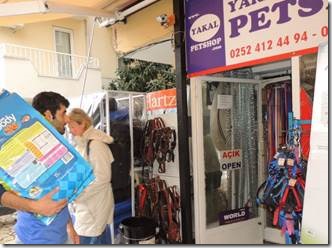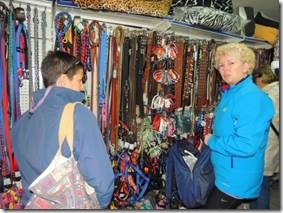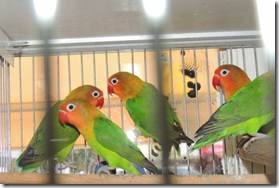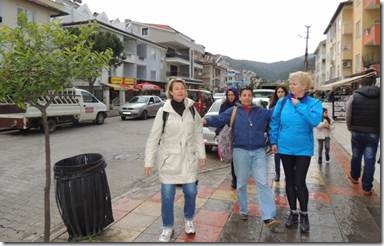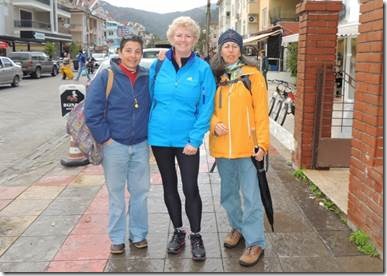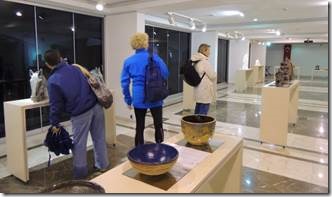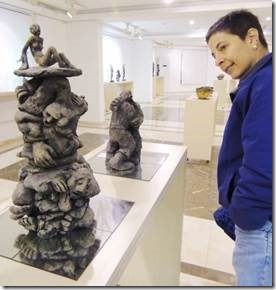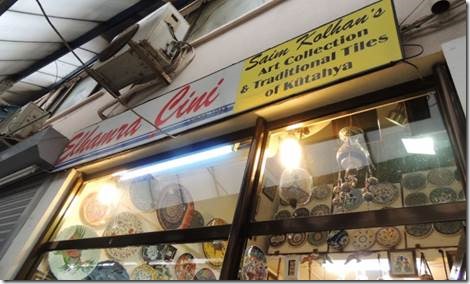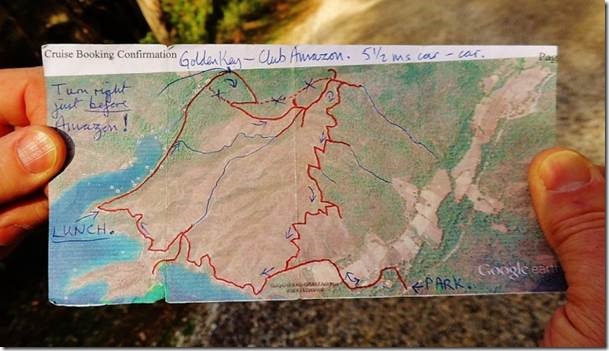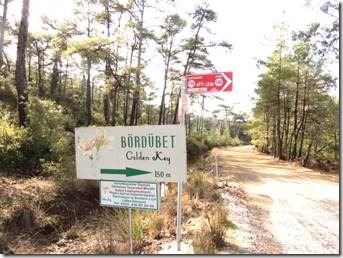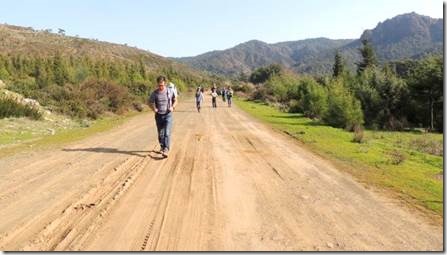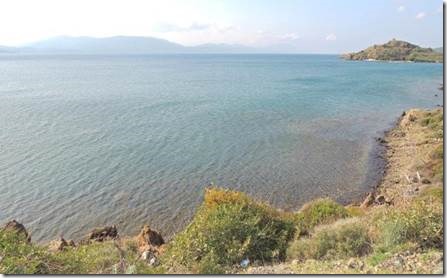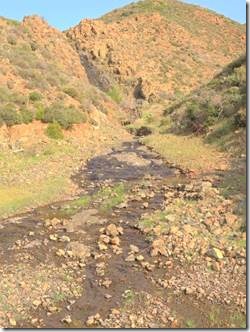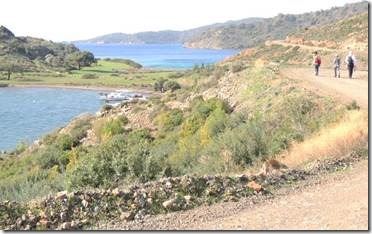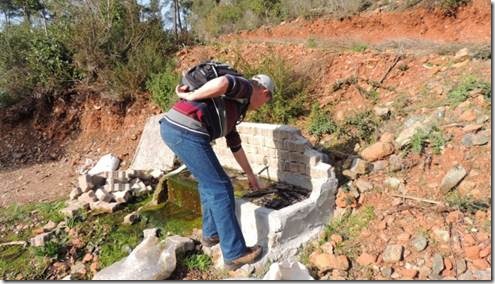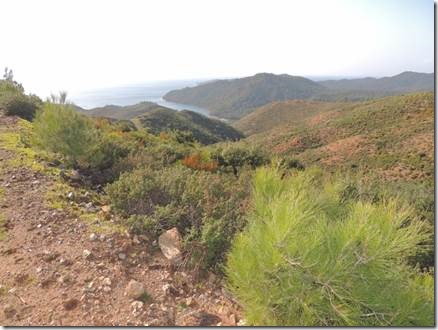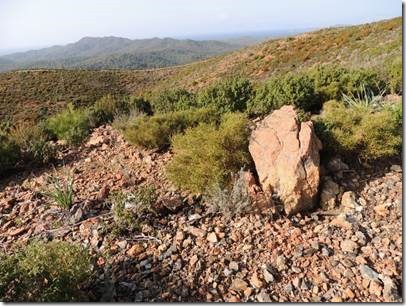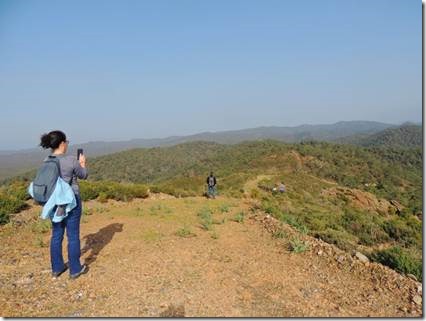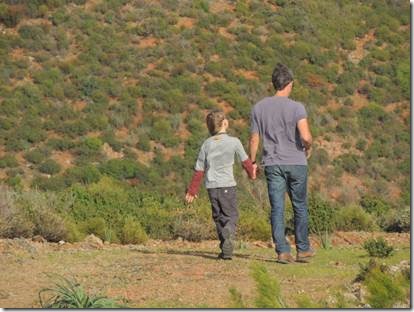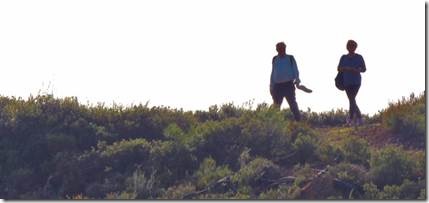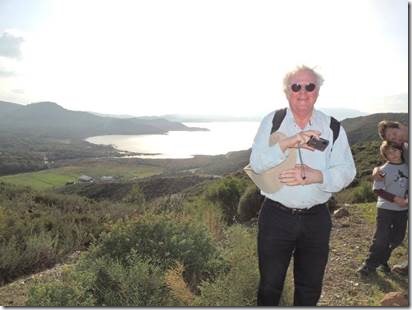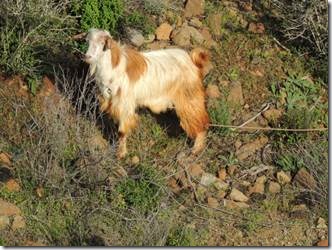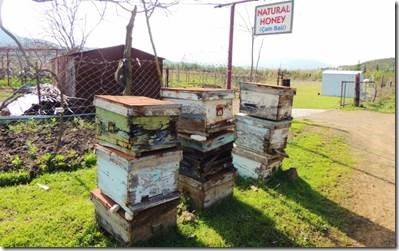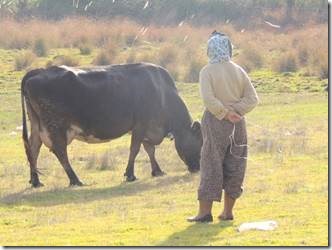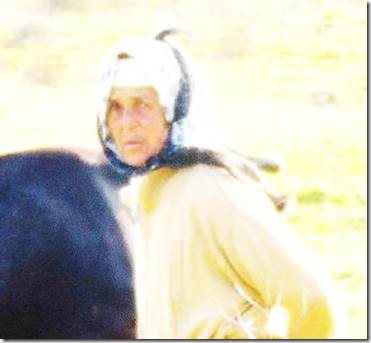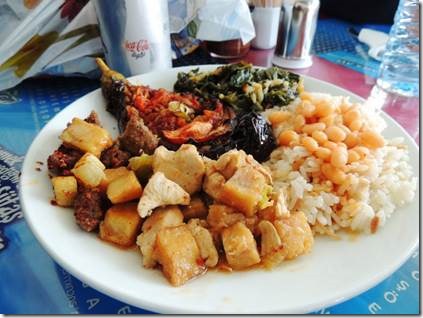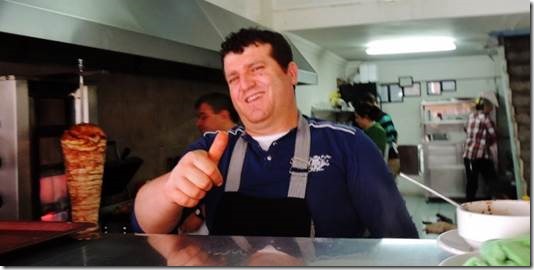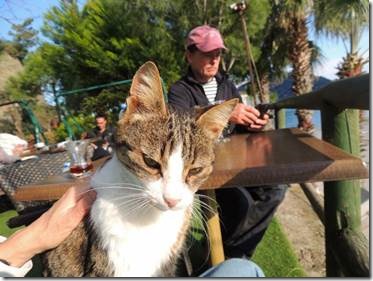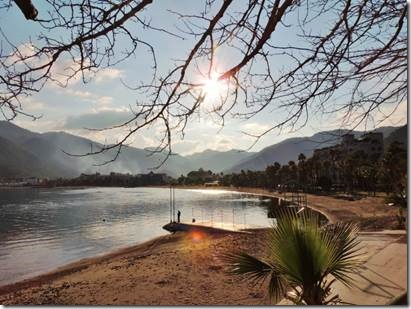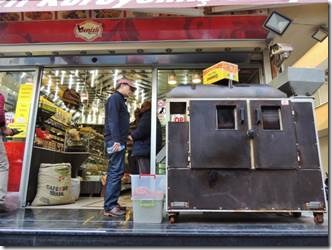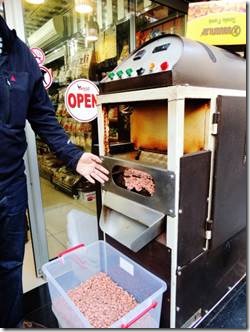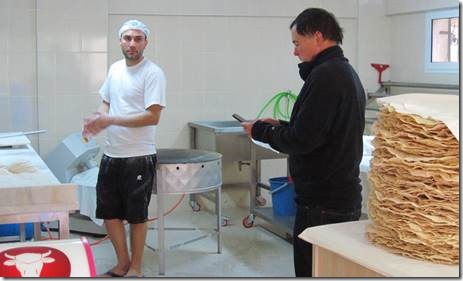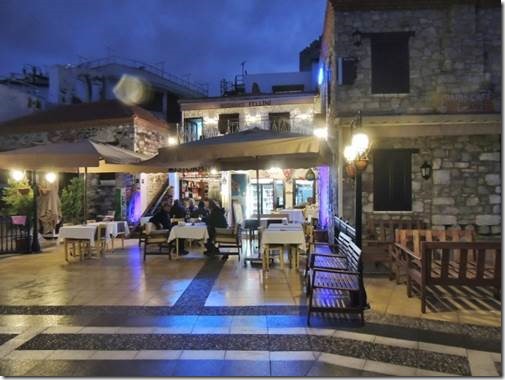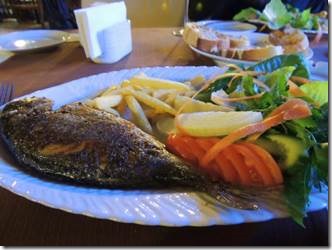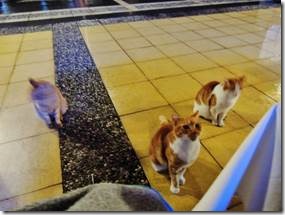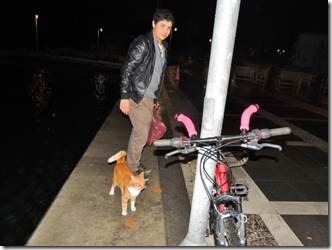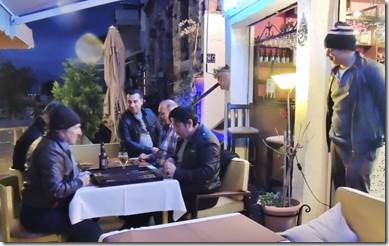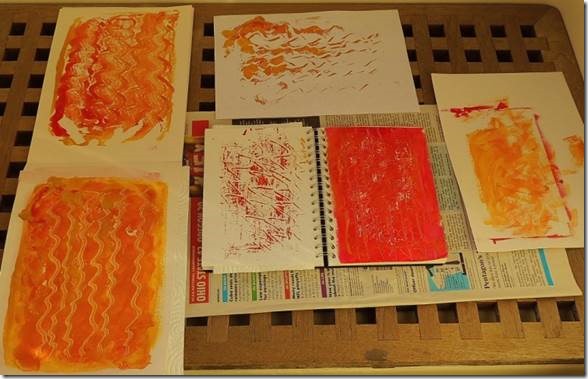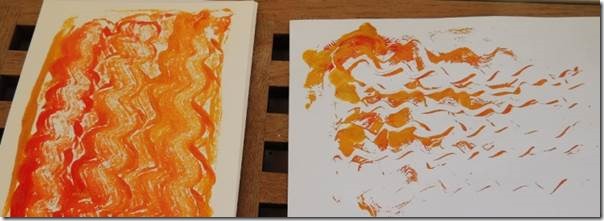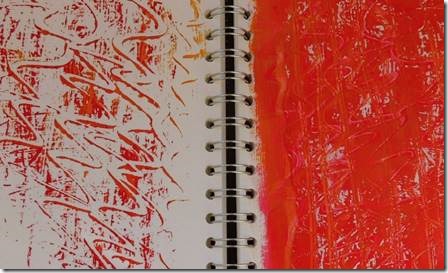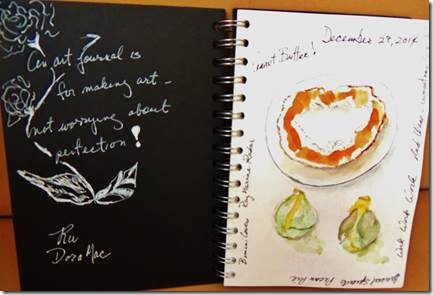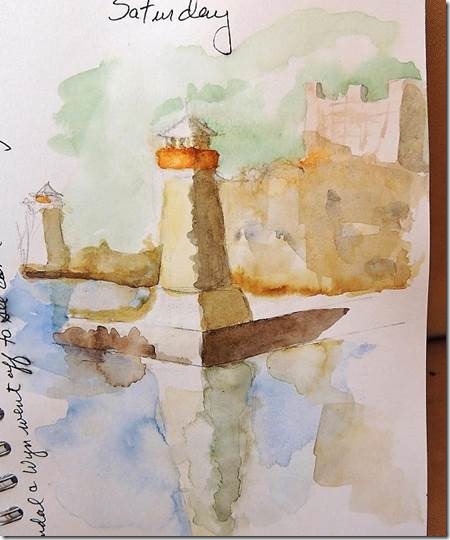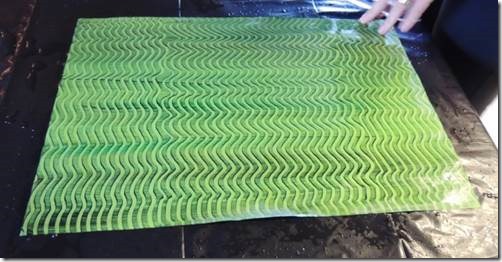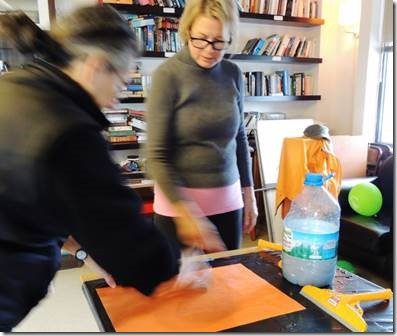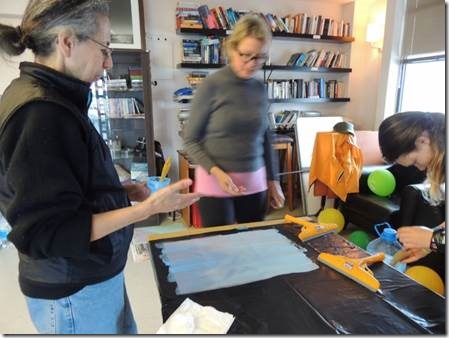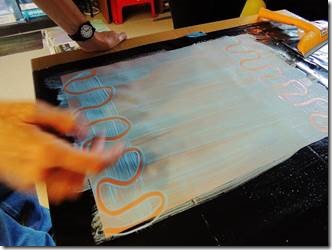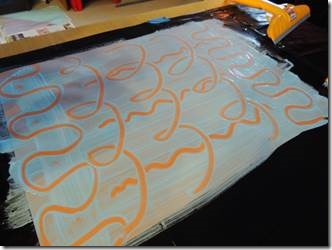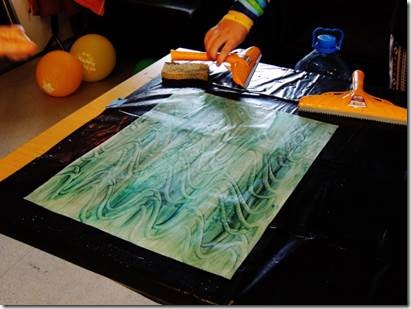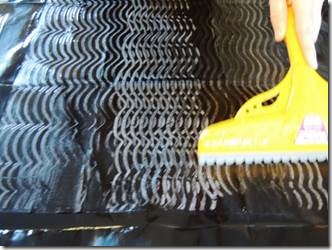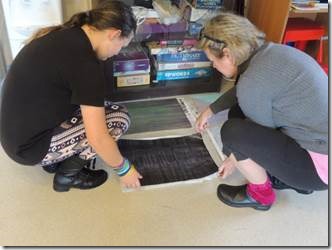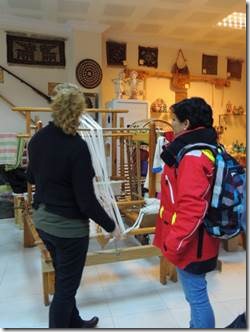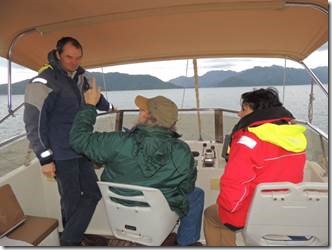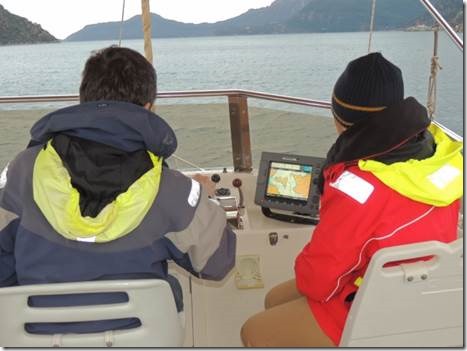B Dock
Netsel Marina
Marmaris, Turkey
Günaydın,
It’s a gloomy, overcast Tuesday morning here in Marmaris, but no heat needed in the boat so that’s nice.
These are the photos Randal took at the camel wrestling event in Selcuk-Efes this past Sunday. He took our small camera so the distance photos aren’t so great. I’ve included links to some videos so you can see it for yourselves.
Ru
DoraMac
Camel Wrestling
Posted 02 January 2014 – 12:44 PM by Chris Drum Berkaya
“The mighty camels of the Aegean and SW Turkey camel wrestling circuit are in full heat for the camel wrestling season running from December to March, and from Çanakkale to Kumluca( Antalya), throwing their weight against each other for their owners’ prizes of championship titles, prize winners carpets and even money.
Before they compete, the wrestling bull camels ‘tülü’, strut, spit and straddle in display in the fields beside the sports arenas where they are gorgeously decked out in enormous wooden packsaddles (havut), richly decorated with embroidery, bells, bobbles, mirrors, flags, scarves: a riot of colour and texture, crowned by the all-important peş- the cloth with the camel’s name and often its hometown embroidered for all to see. The rituals of dressing camels extends to their attentive owners and their carers – the ‘savrans’ where the orange scarves draped around their shoulders, the waistcoats and tweed jodphurs and the special leather boots proclaim them as the dandies of the ‘deveciler’, the ones of the camels, though nowadays some prefer to put their money into the onerous costs of buying and maintaining the magnificent beasts.
They cost a proverbial fortune- to buy- an estimated 20,000TL, plus transport, kit and feed and to employ a carer, if the family members aren’t doing it. But family is usually involved and they treat their camels as part of the family. They might be with one owner for the whole span of their ‘professional’ life. The youngest camels might be broken into the saddle around 4-5 years old, and start wrestling from 6- 20 years old. A long career where injury and damage is avoided at all times, with referees and teams of handlers calling the wrestle- limited to 10 minutes, and hauling the camels off each other once a result is declared or there is too much aggression such as biting each other.
The wresting camels are not often the lean and sinewy cartage camels of the Aegean and Taurus mountains that even now sometimes carry firewood or more often terrified tourists in summer.
According to the Çanakkale professor Dr, Vedat Çalişakan who has made an all too rare study of camel wrestling, the wrestling camels are imported from Iran, Afghanistan, and the central Turkic republics, and are bred to make male camels given a special genus called ‘Tülü’. They are hybrids from crossing ‘the single-hump female Arabian camels of Dromedary species and double-hump Asian male camels of Bactrian Camel species (Camelus bactrianus)’. The dark and shaggy haired beasts are far heavier and powerful, where power and agility counts in forcing its opponent to the ground by crossing and leaning down over necks, or just shouldering to intimidate them into bolting away.
Camel-wrestling is definitely not a blood sport, and derives directly from the tussles of male camels in the wild. However the present traditional wrestling of the Aegean and SW seem to have started when the nomadic camel herding Yoruk people met the milder winter climates of the coasts, and that is the area that sees the tournaments held in the villages and the towns, where amazingly the whole family- men, women and children, young and old turn out to watch their Village favorites, socialize, picnic and enjoy the whole spectacle. And spectacle it is. Indispensable to any tournament are the roaming bands of ‘zurna’ (Clarinet) and ‘davul’ musicians entertaining the tables of raki-drinking and doner-eating tables, until they get their tips. So are the balloon-sellers, scarf-sellers, and yes camel sausage sellers, where old camels go. ( it is spicey but not bad!)
Whatever you do- don’t miss a chance to see the truly unique, traditional camel-wrestling tournament when it comes near you. The Deveciler Dernekler – cameleer associations are growing in number, possibly to take up the organizational load where the diminishing numbers of local municipalities will give up, and with the growth of internet and facebook, they have gone on-line and linked up- producing a calendar of every tournament held in the season.
Expect a heavy political presence this winter as local elections candidates glad-hand everyone around. Bodrum’s mayor will be hoping for his extended family owned camels to win at Ortakent on the 5th January, while also promoting his candidateship for the new Bodrum Peninsula post as did the Konacık mayor before Christmas with their first ever tournament. International tourists might be heading for the most famous Selcuk Tournament on the 19th January, but Kumluca in Antalya is hoping for a record-breaking attendance on 12 January, while at the foot of the Taurus mountains, near Fethiye Karaçulha is hosting the tournament on 2 February. Look for the camel parade the day before, and if you are so lucky- an invitation to the ‘halı’ evening where all the camel owners and local organisers and politicians, meet the night before the tournament to network, drink ,dance and raise money for the tournaments’s costs.
Usual entry fee is 10tl, that partly goes to local projects.
Calendar: ( wet weather and slippery arenas are dangerous so events are ocassionally cancelled)”
http://www.turkeycentral.com/topic/19843-winter-is-camel-wrestling-season/
|
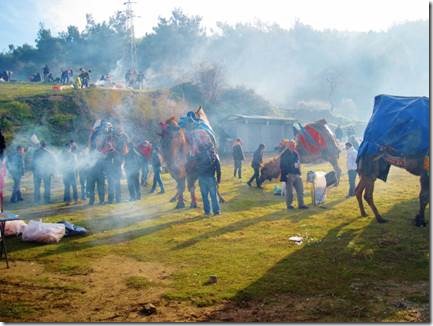
Much was shrouded in the smoke from spectators’ cooking fires.

“They are very proud of their camels and eagerly beg you to take a picture of them standing together. Don’t believe any camel owner that tells you to rub camel spit all over your face because it is good for your complexion. Instead tell him that you will only do it, if he does it first and then get the camera ready for the classic photo opportunity of when a joke backfires.”
http://turkishtravelblog.com/camel-wrestling-turkey/
|
|
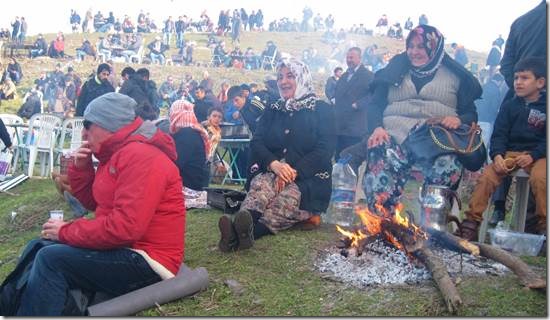
Connie told me that it was mostly a male spectator sport, but here’s a few women enjoying it also.
Our friend Doug in the red jacket maybe warming himself by their fire.
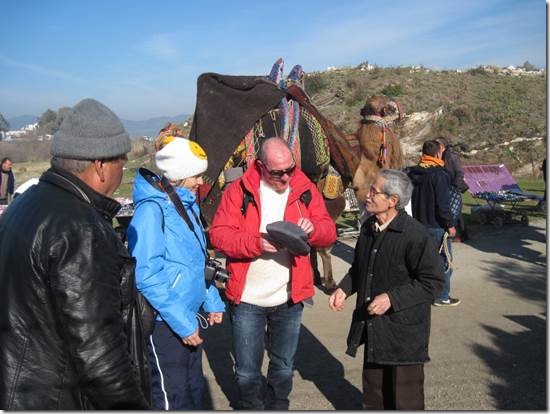
Time for a new hat
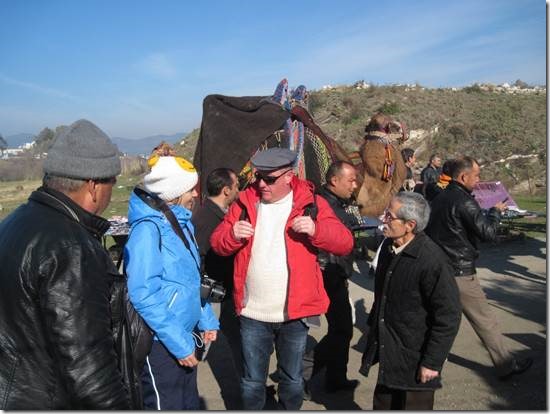
Irene looks on as Doug models his new ‘Turkish’ hat
|
|
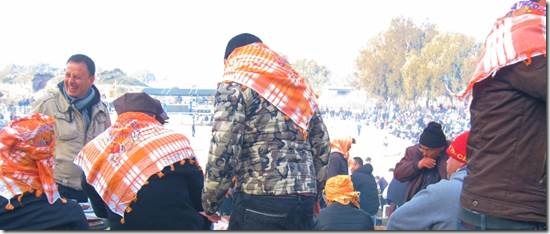
Notice the orange scarves…
I have mine draped around my shoulders as I type.
|
|
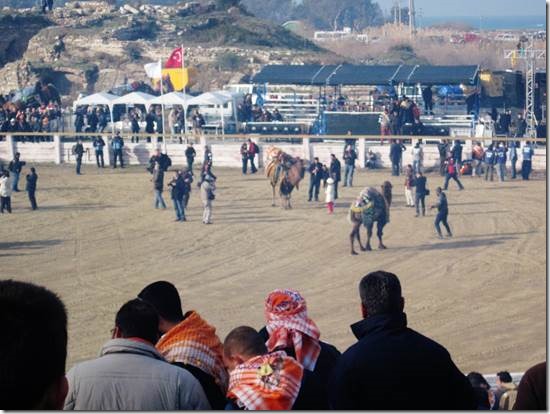
|
|
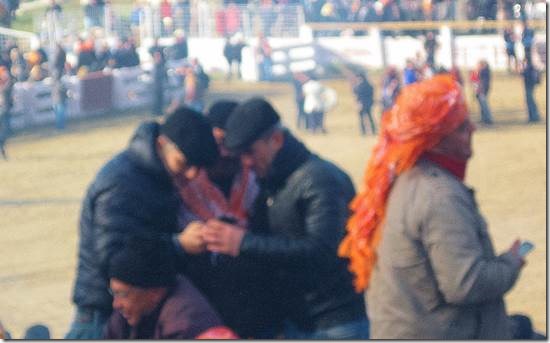
And ancient tradition updated with cell phones
|
|
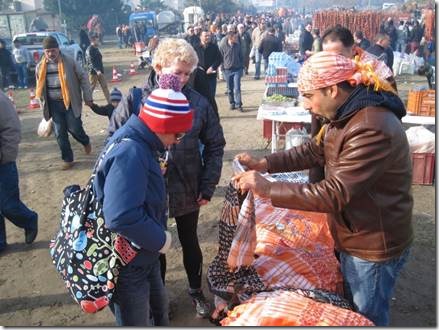
Connie and Jane looking at the orange scarves
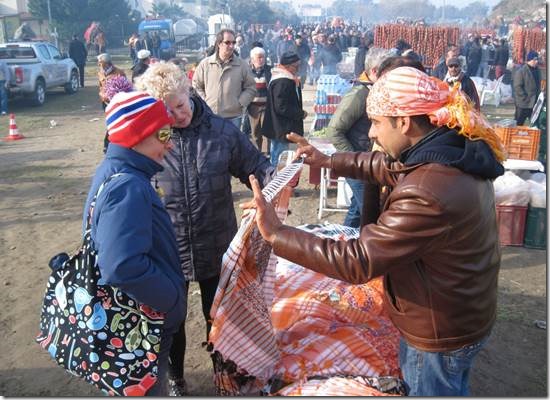
He convinced her; Connie bought some too.
|
|
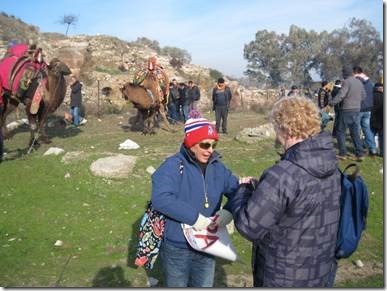
Connie preparing for her special photo..
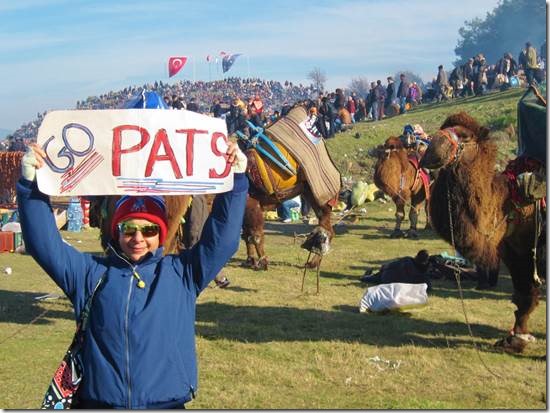
Possibly even more of a PATS fan than you Bruce…. Possibly!?
|
|
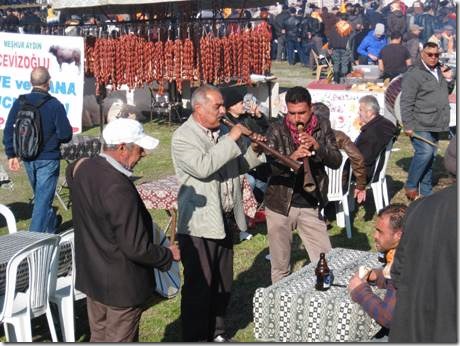
Traditional music and dried beef sausage hanging in the background. Or maybe it’s camel?
|
|
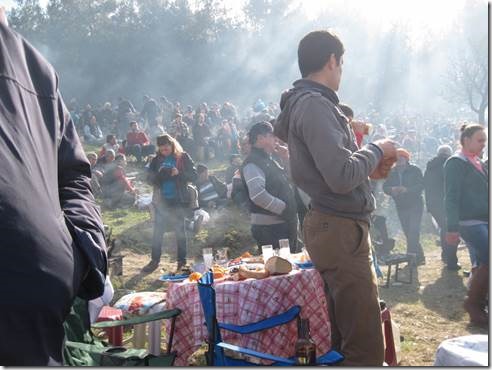
Turkish tailgating!
Connie told me, “Know what it’s like? Our tailgaiting!” Lots of food to go with the festivities which made lots of smoke from the barbecues . (For those who don’t know, people in the US bring food and drinks and barbeque grills to sporting events. They set up everything out in the parking lot by their cars and have a party before the game begins.)
|
|
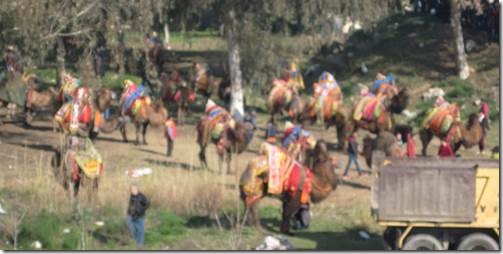
Waiting in the wings….
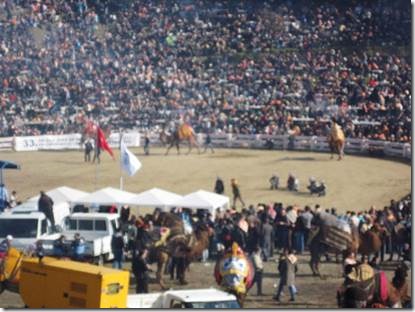
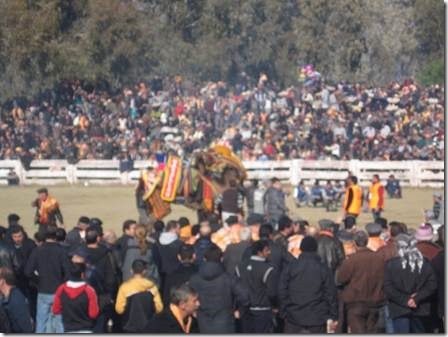

The camel on the right has been lifted from his front feet.
“A camel can win a wrestling match in three ways: By making the other camel retreat, scream, or fall. The owner of a camel may also throw a rope into the field to declare a forfeit if he is concerned for the safety of his animal.
Camels wrestle with others in their same weight class. Camels have different tricks, and contest organizers match camels with different skills. Some camels wrestle from the right and some from the left; some trip the other with foot tricks (“çengelci”), and some trap their opponent’s head under their chest and then try to sit (“bağcı”); some push their rivals to make them retreat (“tekçi”).
A camel wrestling event involves considerable pomp and ceremony. The camels are decorated, and participate in a march through town followed by musicians on the day before the event. The actual wrestling can be somewhat underwhelming to someone not familiar with the intricacies, although onlookers must often flee from an oncoming camel that is retreating in defeat from his opponent.
In the heat of the tournament, camels spew foamy saliva in their excitement. Additionally, camels are retromingent animals, and so spectators would be advised to beware not only of flying saliva but of flying urine as well.”
http://www.selcukephesus.com/what-to-do/camel-wrestling.html has a video link as well.
|
|



|
|

Camels were obviously for wrestling and not for transport.
|
|
http://www.today.com/video/today/40840381#40840381 video from the Today show
|






